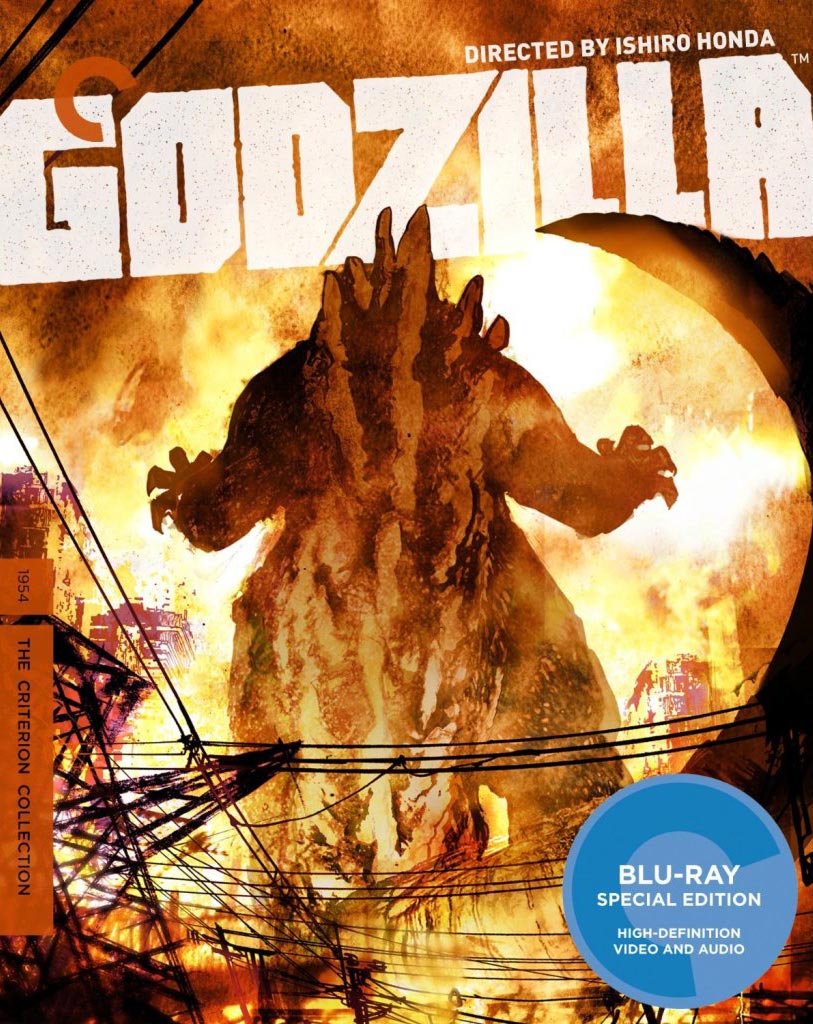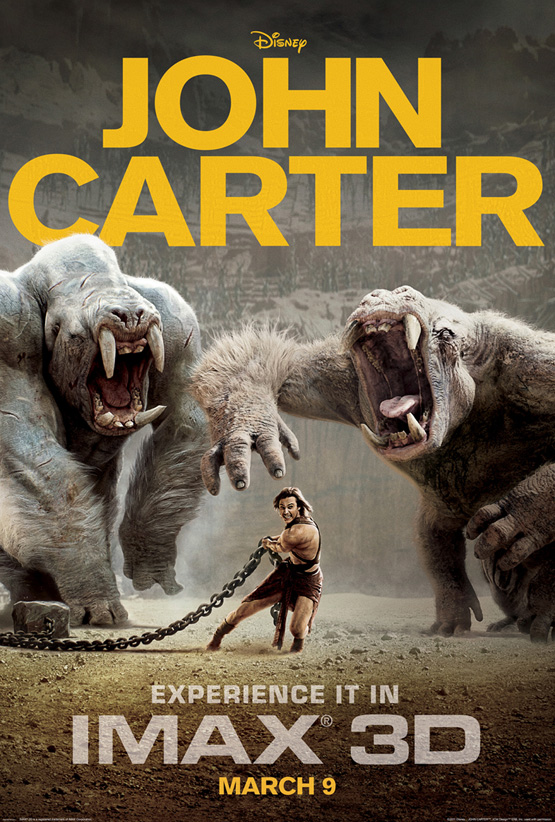 John Carter (2012)
John Carter (2012)
Directed by Andrew Stanton. Starring Taylor Kitsch, Lynn Collins, Willem Dafoe, Mark Strong, Dominic West, Samantha Morton, Ciarán Hinds, Thomas Haden Church, James Purefoy, Darryl Sabara.
Update: Thank you to all Black Gate readers who have shown the love for John Carter and Edgar Rice Burroughs, and who boosted me with positive comments and emails regarding my long-term project of reviewing all the Martian novels. I’ve never felt so much support from the Internet in the eight years I’ve been an active blogger and reviewer, four of them at Black Gate.
Don’t expect the brackets in my post title John Carter [of Mars] to endure. People who have already seen John Carter will know what I mean: Walt Disney Pictures could not stop director Andrew Stanton from making John Carter of Mars the true title of his adaptation of Edgar Rice Burroughs’s century-old classic A Princess of Mars. Stanton, a fan of the Martian novels since he was a child, has given the perfect fan treatment to the material. If you’re a fan as well, then John Carter will carry you from the beginning until the end on a wave of childhood joy until you choke up at the final title cards.
If you’ve been reading my reviews of the Martian novels, then you already know my bias; I am also an Edgar Rice Burroughs fanatic from a young age. As with Captain America: The First Avenger, I am inclined to love this film more than most viewers. But, as with Captain America, I feel confident that the majority of viewers will enjoy this film, with a few caveats. Burroughs fans, however, may purchase with rock solid confidence.
In fact, the fan-service the film offers might end up a problem. If anything holds back John Carter from being a sizable hit — aside from some poor marketing choices — it will be that it is relentlessly “Burroughsian.” Never has an adaptation of Edgar Rice Burroughs caught so closely his spirit and his style. But John Carter goes even farther than finding the tone of its source: it is steeped in the mythology of Barsoom — ERB’s fantasy version of Mars — crammed with its politics, its biology, its language, its technology. For general audiences who know little about The First Citizen of Tarzana, the film may confuse them. Director Andrew Stanton shows how much he loves his source material in the way he refuses to water down any of it. The intricacies of Martian politics and its array of races appear on screen without apology and without hand-holding the audience.
I applaud that in a movie that on the surface looks like nothing more than a standard science-fiction popcorn event offering big action thrills and beautiful people armed with swords and guns. But I wonder if this will turn off the casual viewer. I hope not, because John Carter far exceeds other recent films of its genre with strong characters and CGI that enhances the experience instead of turning it into Transformers 3-style noise. Perhaps the movie isn’t a classic, but I have a sense that if Andrew Stanton gets a shot at making the next movie in the series, The Gods of Mars, then classic-dom is within his grasp. And ours.
…
Read More Read More
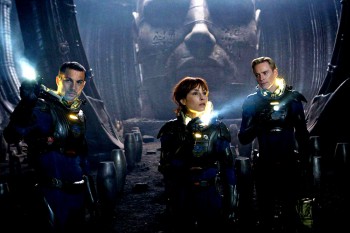 Summer is almost here, and the time is almost right, for dancing in the streets. Or sitting your butt down in a movie theater to watch a big green thing in purple pants beat up aliens.
Summer is almost here, and the time is almost right, for dancing in the streets. Or sitting your butt down in a movie theater to watch a big green thing in purple pants beat up aliens.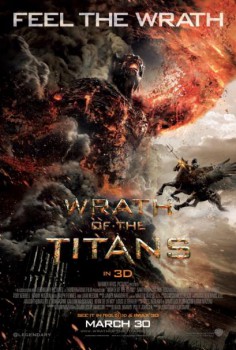 Wrath of the Titans (2012)
Wrath of the Titans (2012)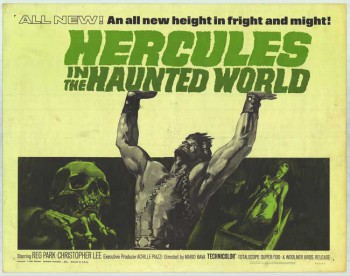
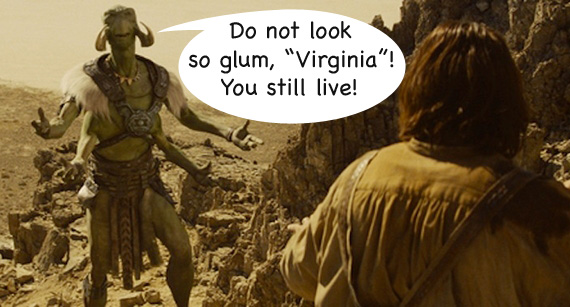
 John Carter (2012)
John Carter (2012)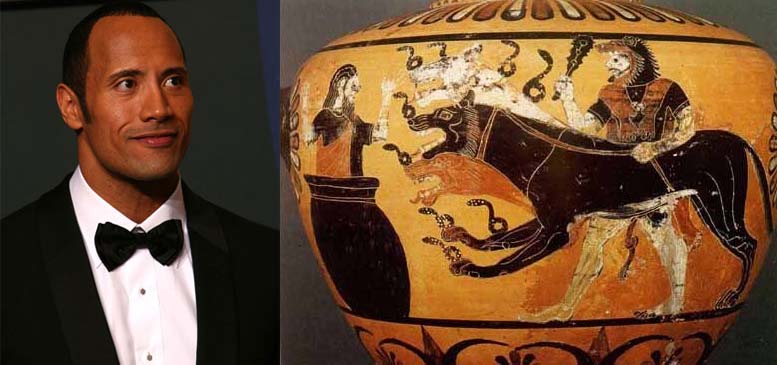 I shall be briefer today than usual, since I plan to put up another post on Black Gate this coming Friday: a review of the film John Carter [of Mars]. If I’m doing an overview
I shall be briefer today than usual, since I plan to put up another post on Black Gate this coming Friday: a review of the film John Carter [of Mars]. If I’m doing an overview 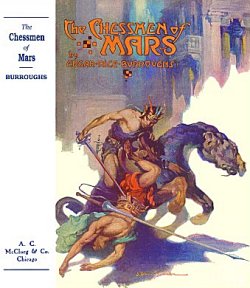 “The squares shall be contested to the death. Just are the laws of Manator! I have spoken.”
“The squares shall be contested to the death. Just are the laws of Manator! I have spoken.”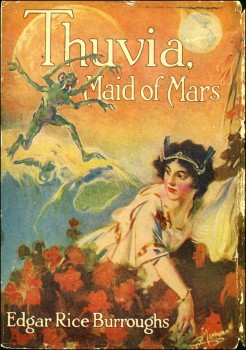 John Carter’s story appeared finished with
John Carter’s story appeared finished with  The Woman in Black (2012)
The Woman in Black (2012)